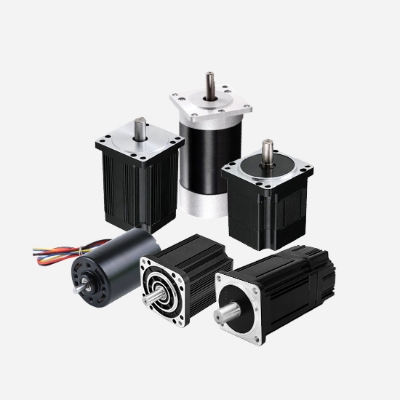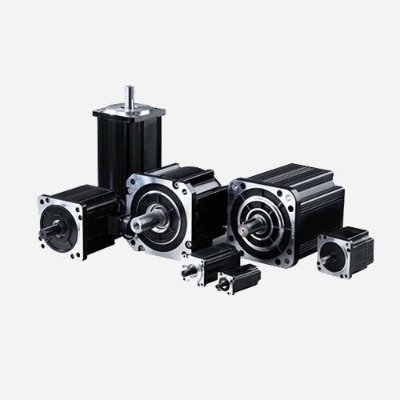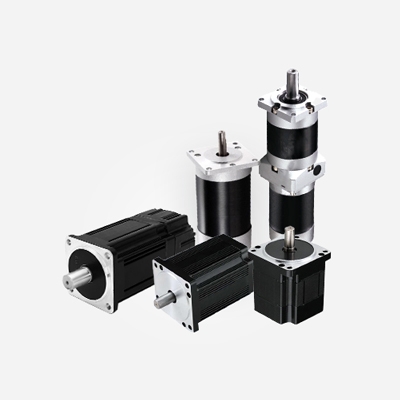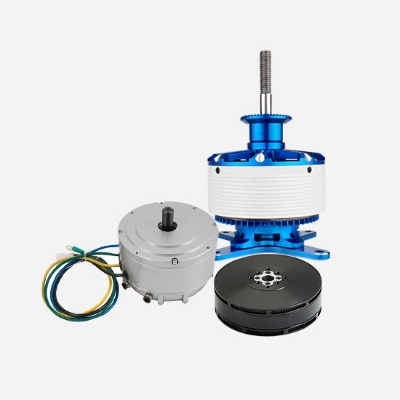The difference between a brushed motor and a brushless DC motor is the presence or absence of a commutator, a common brush. Brush DC motors are always commutated by graphite brushes in contact with a ring commutator mounted on the rotor. Brushless motors, on the other hand, use Hall sensors to feed the rotor position back to the control circuit, allowing it to be informed of the exact timing of the motor phase commutation. Most brushless motor manufacturers produce motors with three Hall-effect positioning sensors. Because brushless motors have no brushes and therefore no associated interfaces, they are cleaner, less noisy, and in fact, require no maintenance and last longer.
The following is an introduction to the working principle of brush motors and brushless DC motors, and finally a detailed description of the differences between brush motors and brushless motors in terms of speed regulation and performance differences.
Brush motor vs. brushless DC motor working principle
Brush DC motor

When the motor works, the coil, and the commutator rotate, the magnet and carbon brush do not rotate, and the alternate change of coil current direction is done by the commutator and brush that rotate with the motor. In the electric vehicle industry, brush motor is divided into high-speed brush motors and low-speed brush motors. There are many differences between brushed and brushless motors. From the name, we can see that brushed motors have carbon brushes and brushless motors do not have carbon brushes.
A Brush motor has two main parts: stator and rotor. The stator has magnetic poles (winding type or permanent magnet type), and the rotor has to wind. When energized, a magnetic field (magnetic poles) is also formed on the rotor, and there is an angle between the magnetic poles of the stator and rotor. Changing the position of the brush can change the direction of the stator-rotor pole angle (assuming that the stator pole is the starting side of the angle and the rotor pole is the other side, the direction of the rotor pole pointing to the stator pole is the direction of rotation of the motor), thus changing the direction of rotation of the motor.
Brushless DC motor

Brushless DC motors take electronic commutation, the coil does not move, and the magnetic pole rotation. Brushless motor, is the use of a set of electronic equipment, through Hall elements, sensing the position of the magnetic poles of the permanent magnet, according to this perception, the use of electronic circuits, the timely switching of the direction of the current in the coil, to ensure the production of the correct direction of magnetic force to drive the motor. The disadvantages of brushed motors are eliminated.
These circuits are the motor controller. The controller of the brushless motor can also achieve some functions that the brush motor cannot achieve, such as adjusting the power switching angle, braking the motor, reversing the motor, locking the motor, and using the brake signal to stop supplying power to the motor. Nowadays, the electronic alarm lock of electric bicycles makes full use of these functions.
Brushless DC motor consists of a motor body and driver, which is a typical mechatronic product. Since brushless DC motors operate in a self-controlled manner, they do not add another starting winding to the rotor like synchronous motors that start under heavy load under frequency regulation, nor do they produce oscillations and lost steps when the load changes suddenly.
Different structure composition
DC brushless motor consists of a motor body and driver, the stator winding of the motor is mostly made into three symmetrical star connections, and the driver is composed of power electronics and integrated circuits.
The basic structure of a DC brush motor consists of a stator, rotor, brushes, and commutator. Stator and rotor magnetic fields interact to drive the motor rotation.
Different speed control methods
In fact, the control of both types of motors is regulated, only because brushless DC uses electronic commutation, so it is necessary to have digital control to achieve it, and brush DC is commutated by carbon brushes, the use of silicon controlled and another traditional analog circuit can be controlled, relatively simple.
Performance Structure Differences
In a brushed DC motor, the brushes are in constant contact with the rotary commutator. This leads to a lot of friction, which in turn leads to heat loss of energy and gradual wear of the brushes. As a result, brushed DC motors are inefficient and require regular maintenance. This generates a lot of friction and the friction equals heat (energy loss) and wear. Brushless DC motors, on the other hand, are inherently frictionless and therefore have high efficiency, require zero maintenance, and last longer than brushed DC motors.
However, brushed DC motors are brushless DC motors that are cheaper compared to their brushless counterparts due to their simple design. Brushless DC motors, on the other hand, are very expensive due to their complex design and the additional cost of the extra electronic components (controllers) needed to drive them.
The design complexity of brushless DC motors makes them very expensive compared to their brushed DC counterparts. Before purchasing a brushless DC motor, make sure that the additional cost of the item is affordable. Also, consider the cost of other accessories needed to use the BLDC before making a decision.




